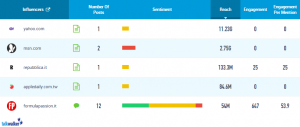SEO is a bit like a chameleon, changing its colors as the marketing landscape evolves — or better, as the latest algorithm from Google deems necessary. Things like the URL, meta data, H1, and alt tags are known to affect ranking, with some saying there are nearly 200 different ranking factors that affect where your page will appear in that next search.
Regardless of the number of factors, there is no denying that Google constantly tinkers with and introduces new algorithms to better assess the quality of content and experience a webpage offers. Since search’s infancy, the effort to serve up content relevant to a user’s question has been at the core of many algorithm updates.
Google’s primary objective is to make the world’s information universally accessible and increasingly useful at a faster and faster pace. So content quality isn’t a new or surprising concept. It’s even debatable whether this even represents a true shift in methodology, given Google’s countless efforts to eliminate easily hackable signals.
The focus on mobile experience, however, is new.
According to eMarketer’s “US Digital Users: The eMarketer Forecast for 2016” study, more than 80 percent of individuals in North America will use a mobile phone, meaning the organization and accessibility of that information affects usability. Each element demands a unique skill set yet must also complement the others.
Keywords, meta data, and backlinks are no longer enough. Google now scans sites and content for usability and user experience. Marketers must consider this paradigm shift when developing their SEO game plans.
The Keys to Good SEO
Experience is a critical aspect of successful SEO, but the basics don’t have to cost tons of money or manpower. A simple, mobile-responsive design serves your brand until you can upgrade. Google’s mobile searches surpassed desktop queries for the first time in 2015, and there’s likely no going back. As always, you have to serve customers on their terms — or, in this case, at the tips of their fingers.
Once the mobile component comes together, you must consider your content. From blogs and branded articles to social posts, it — along with your publishing and sharing strategies — should align with your target audience’s interests.
Know how people interact with your product, and let that information guide your content. In the all-important world of mobile experience, these metrics indicate whether you’re on the right track:
- Mobile tests: Run these to determine where you’re hitting issues with search engines. Is your usability not up to par? Does your mobile site have coding or syntax errors? Find out what’s causing problems under the hood. Do some diagnostics to determine whether your site is mobile-friendly.
- Engagement: The big challenge is whether users are taking the actions you desire. This might include subscribing to an email newsletter or downloading a free e-book. If people reach your landing page but navigate away without acting, figure out why.Track engagement rates across various platforms, and adjust your strategies accordingly. A clothing retailer’s audience might favor one type of content, but a surgical hair restoration company’s customers might want something else entirely.
- Bounce rates: Programs such as Google Analytics and Lucky Orange generate heat maps to help you see exactly the types of content and site components people gravitate toward. If they’re not taking the desired actions, these maps might help you solve the mystery. Analyzing bounce rates helps identify gaps between your goals and actual customer experiences.
Maximize Mobile and Content
Marketers know mobile is mandatory, but content creates other challenges. Combining both in the service of SEO is new territory for most brands, and it can be difficult to know where to begin.
You’re no longer solely worried about search rankings; you must also consider what’s being said about your brand on social and offline. Here’s how to master mobile while conquering content:
1. Hire strategically. Seek candidates with strong technical backgrounds, as well as creatives who can elevate your content. If you have an excellent technical website, put more money toward the content. If your content is great, do the opposite.
Use your resources to build a well-balanced, complementary SEO force. Consultants and independent agencies can supplement your in-house team if you lack the tools to hire more full-time staff. The key is to optimize the mobile experience with content that matters.
2. Make quality key. Content generation costs time and money, but it’s critical to your success. Many companies struggle to develop in-house blog posts, articles, whitepapers, and other materials.
If that’s the case for your team, don’t ignore the problem. Search engines reward brands that provide value to users, something at which content excels. News items, images, video, and other content make up 85 percent of Google search results, so don’t leave content out of your strategy.
3. Monitor traffic and leads. To determine whether your SEO strategies are successful, look to your organic search gross profits. Track lead generation and conversion based on your SEO touchpoints.
Know which landing pages drive new leads and which content pieces directly link to conversions. Traffic plays a significant role in search rankings, so ensure you hit your goals.
The more traffic a site generates, the more relevant it appears to search algorithms. Don’t look solely at overall numbers, though. Identify which keywords, pages, and content drive the most traffic to your site.
Mobile user experience and content are distinct fields, but SEO depends on both. They’re increasingly intertwined as marketers learn the ever-changing rules of search algorithms, and companies must hire talent that can keep pace.
Brands that invest in SEO content and mobile experts — and know how to leverage both resources — are the ones that will have the most success moving forward.
Digital & Social Articles on Business 2 Community(73)





